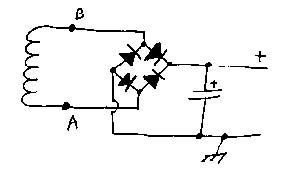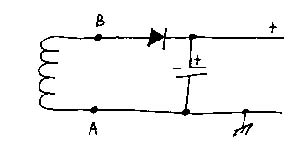- Digitrax LocoNet®
-
- LocoNet Tools
- LocoNet Simulator
- Command Stations
- Programmers & Adapters
- Networking
- Technical
- Supported Hardware
- Devices, command stations, networks, and protocols:
- Anyma DMX
- Arduinos
- Atlas Commander
- Bachrus
- BiDiB
- CAN Bus Networks
- CBUS®
- C/MRI
- CTI Electronics (Acela)
- CVP EasyDCC
- Dcc4Pc
- DCC-EX EX-CommandStation
- DCC++
- DCC Specialities
- Digi XBee
- Digikeijs / YAMORC
- Digitrax
- DMX 512 (Powerline)
- ESU ECoS
- Fleischmann
- Hornby
- Insteon (Powerline)
- LCC
- Lenz
- Lionel TMCC
- LocoNet
- Maple Systems
- Märklin CS2
- MERG
- Modbus
- MQTT
- MRC
- NAC Services RPS
- NCE
- Oak Tree Systems
- OpenDCC
- OpenLCB
- Pi Engineering RailDriver
- Powerline
- Protrak Grapevine
- QSI Quantum Programmer
- Raspberry Pi
- RFID Readers
- Roco
- SPROG DCC
- SPROG DCC Generation 5
- SRCP server
- TAMS Master Control
- TracTronics SECSI
- Uhlenbrock Intellibox
- Viessmann Commander
- Wangrow System One
- WiFi Throttles
- X10 (Powerline)
- XPressNet
- Zimo MX-1
- ZTC Controls
- Applications
- By the community of JMRI.org:
- Tools
- JMRI tools for working with your layout:
- Common Tools:
- Blocks:
- Routing and Control:
- Other:
- System-specific...
- Web server tools...
- Layout Automation
- Use JMRI to automate parts of your layout and operations:
Hardware Support: Measurements on power leads of Digitrax components
I wanted to understand the reasons behind Digitrax's recommendations about separate power sources for PM4 and DS54 boards. This page describes some measurements on my layout, and what I conclude from them.
Conclusions
The DCS100 and PM4 appear to use full-wave rectifier power supplies, while the DS54 uses a half-wave rectifier supply. These two types require different offsets between system ground and the transformer leads, which explains why these three types of components can't share AC auxiliary power supplies.Specific measurements
In this section, I describe the measurements leading to my conclusions.The following measurements were made on an operating layout. It is powered by a single DCS100 (Chief) booster, with PM4 units for power subdistricts and DS54 units for various controls. Track power was on, and the DCS100 was in "run" mode, i.e. sending packets on the rails. About 1.2 A was being drawn from the DCS100 booster output. During the measurements, no LocoNet® commands were sent, nor were reversing sections being traversed.
Unfortunately, the camera scope photos wasn't sufficiently sensitive, so they show a lot of blur. In all pictures, the ground reference was centered and the vertical scale was 5V/division. The scope was line triggered. Only a single trace is shown.
Booster measurements
Normally my DCS100 booster's ground connection is connected to the AC ground, hence to earth. I temporarily disconnected this to see what would happen with a floating layout. I found a 60Hz offset voltage of about 9V. A 100K resistor to ground removes this, so the source impedance is very large. The photo was made with a 10MHz bandwidth limit; the visible spikes are about 6V with no bandwidth limit (500MHz scope). The ungrounded layout was probably generating a lot of RF noise...For the rest of the measurements, I reconnected the DCS100 ground to the power ground. Both noise and offset were then less than 20mV.
With respect to system ground, the Rail A and Rail B lines alternate between 12V and about
0.8V:


It appears that the DCS100 internal high-power supply is only positive. To get a better
understanding of that, I looked at the two power in lines from the transformer:


Note they are both positive at all times, not centered on ground. The lowest voltage is about
1.3V below ground. This is characteristic of a full-wave rectifier supply with one side of
the output grounded. The small offset is due to the voltage drop across the low-side diode,
while the flat-top on the waveform occurs when the transformer reaches a large enough voltage
to charge the filter capacitor.

PM4 measurements
My PM4 power supply is an isolated transformer. I made no measurements with a DC auxiliary supply. The LocoNet was connected, providing a common ground connection.The voltages on the PM4 power connections look like:


Like the booster, this is indicative of a full-wave rectified power supply. The load profile
is very different from what's seen on the booster supply. The ugly waveforms may be because
my PM4 supply is a cheap little Radio Shack 450mA transformer; it seems to be clearly
saturating.
DS54 measurements
My DS54 power supply is an isolated transformer. I made no measurements with a DC auxiliary supply. The LocoNet was connected, providing a common ground connection.The voltages on the DS54 "black" and "red" power connections look like:


This is indicative of a half-wave rectified power supply. Note this is different from the PM4
and DCS100.

Note the ripple in the ground (black) lead. Digitrax recommends that you not
connect the DS54 ground lead to system ground; this offset shows why its a good idea to
listen to that recommendation. The ground in the cartoon schematic is the DS54 black-wire
"ground", but it is not the same as the system (LocoNet) ground.
Don Crano has pointed out that the DS54 is deriving a local ground from the rail connections so that the BD1 block current detector can use the DS54 ground connection. The following photos show that the offset from system ground changes slightly as the pulse-stretching for analog operation moves from one extreme to the other. (Note that these photos are at 1V/division, with system ground in the center.)
LocoNet® is a registered trademark of Digitrax, Inc.
Back to the Digitrax Hardware main Help Page

 LocoNet connected, analog at -99
LocoNet connected, analog at -99 LocoNet connected, analog at 0
LocoNet connected, analog at 0 LocoNet connected, analog at +99
LocoNet connected, analog at +99 LocoNet disconnected, analog at -99
LocoNet disconnected, analog at -99 LocoNet disconnected, analog at 0
LocoNet disconnected, analog at 0 LocoNet disconnected, analog at +99
LocoNet disconnected, analog at +99